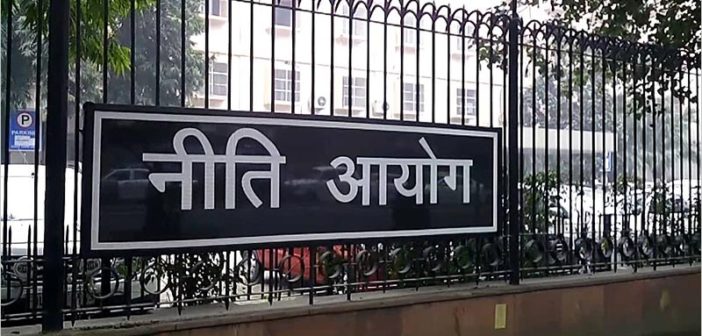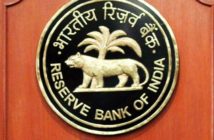NITI Aayog today released the second edition of the Sustainable Development Goals (SDG) India Index, which comprehensively documents the progress made by India’s States and Union Territories towards achieving the 2030 SDG targets.
The SDG India Index—which has been developed in collaboration with the Ministry of Statistics and Programme Implementation (MoSPI), United Nations in India, and Global Green Growth Institute—was launched by NITI Aayog Vice Chairman Dr Rajiv Kumar; Members Dr Ramesh Chand and Dr V K Paul; CEO Amitabh Kant; UN Resident Coordinator Renata Dessallien; MoSPI Secretary and Chief Statistician of India Pravin Srivastava; and NITI Aayog SDG Adviser Sanyukta Samaddar.
At the launch, NITI Aayog Vice Chairman Dr Rajiv Kumar said, ‘This government, led by Hon’ble Prime Minister Narendra Modi, will not leave any stone unturned to make sure India achieves Agenda 2030.There is commendable traction and no complacency. NITI Aayog has committed itself to building capacities and monitoring progress at the state level. Close coordination with the states over the next 5 years will further accelerate SDG localization and ensure greater improvement.’
‘In 2020, the world enters the final decade for achieving the SDGs—the ‘Decade for Action’. And the Intergovernmental Panel on Climate Change tells us that we have 12 years left to save the planet from the worst effects of climate change. So, the time to act is now. The SDG India Index 2.0 and the dashboard enables India to both track and encourage accelerated progress to meet the SDGs across all its States and Union Territories,’ said UN Resident Coordinator Renata Dessallien.
India’s composite score has improved from 57 in 2018 to 60 in 2019, thereby showing noticeable progress. The maximum gains been made in Goals 6 (clean water and sanitation), 9 (industry, innovation, and infrastructure) and 7 (affordable and clean energy). All three states that were in the ‘Aspirant’ category (with score/s in the range of 0–49)—Uttar Pradesh, Bihar and Assam—have graduated to the ‘Performer’ category (50–64). Five states—Andhra Pradesh, Telangana, Karnataka, Goa, and Sikkim—moved up from the ‘Performer’ category to the ‘Front Runner’ category (65–99). Kerala achieved the first rank in the composite SDG Index with a score of 70, followed by Himachal Pradesh at 69. Andhra Pradesh, Telangana, and Tamil Nadu ranked at the third position with the score of 67. The biggest improvers since 2018 are UP (which has moved from the 29th position to the 23rd), Orissa (23rd to 15th), and Sikkim (15th to 7th). While Bihar improved its score from 48 in 2018 to 50 in 2019, it still has a long way to go in achieving the targets.
The world is now in the fifth year of the SDG era. India’s National Development Agenda is mirrored in the SDGs. India’s progress in the global Goals is crucial for the world as the country is home to about one-sixth of the world’s population. The SDG India Index 2019 tracks progress of all States and UTs on 100 indicators drawn from the MoSPI’s National Indicator Framework (NIF). The process of selection of these indicators included multipleconsultations with Union ministries/departments and States/UTs.
The SDG India Index 2019 is more robust than the first edition on account of wider coverage of goals, targets, and indicators with greater alignment with the NIF. The Index spans 16 out of 17 SDGs with a qualitative assessment on Goal 17. This marks an improvement over the 2018 Index, which covered only 13 goals.Additionally, this year, the SDG India Indexreport has a new section on profiles of all 37 States and UTs, which will be very useful to analyse their performance on all goals in a lucid manner.
A composite score was computed in the range of 0–100 for each State/UT based on its aggregate performance across 16 SDGs, indicating the average performance of every State/UT towards achieving 16 SDGs and their respective targets. If a State/UT achieves a score of 100, it signifies it has achieved the 2030 national targets. The higher the score of a State/UT, the closer it is towards achieving the targets.
Classification criteria based on SDG India Indexscore is as follows:
-
-
- Aspirant: 0–49
- Performer: 50–64
- Front Runner: 65–99
- Achiever: 100
-
NITI Aayog has the twin mandate to oversee the implementation of SDGs in the country and promote competitive and cooperative federalism among States and UTs. The SDG India Index acts as a bridge between these mandates, aligning the SDGs with the Hon’ble Prime Minister’s clarion call of Sabka Saath, Sabka Vikas, Sabka Vishwas, which embodies the five Ps of the global SDG movement: people, planet, prosperity, partnership and peace.
The SDG India Index2019 is available on an online dashboard, which has cross-sectoral relevance across policy, civil society, business and academia. The Index is designed to function as a tool for focused policy dialogue, formulation and implementation, and moving towards development action pegged to globally recognizable metrics. The Index also supplements NITI Aayog’s continuous efforts to encourage evidence-based policymaking by supporting States/UTs to benchmark their progress, identifying priority areas and sharing best practices.
The SDG India Index 2019will also help highlight crucial gaps related to monitoring SDGs and the need for improving statistical systems at the National/State/UT levels.Further, the Indexhighlights the need for improvements in data collection, reporting and methodology. NITI Aayog is also exploring partnerships for disaggregating data and developing capacity for real-time monitoring and measuring incremental progress.





